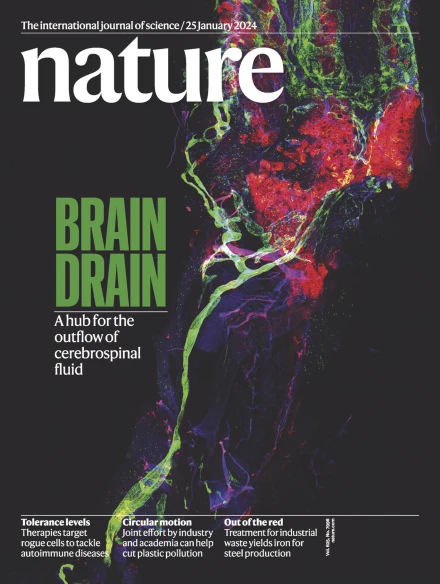Synergistic photobiocatalysis for enantioselective triple-radical sorting
IF 50.5
1区 综合性期刊
Q1 MULTIDISCIPLINARY SCIENCES
引用次数: 0
Abstract
Multicomponent reactions—those where three or more substrates combine into a product—have been highly useful in rapidly building chemical building blocks of increased complexity1, but achieving this enzymatically has remained rare2–5. This limitation primarily arises because an enzyme’s active site is not typically set up to address multiple substrates, especially in cases involving multiple radical intermediates6. Recently, chemical catalytic radical sorting has emerged as an enabling strategy for a variety of useful reactions7,8. However, making such processes enantioselective is highly challenging owing to the inherent difficulty in the stereochemical control of radicals9. Here we repurpose a thiamine-dependent enzyme10,11 through directed evolution and combine it with photoredox catalysis to achieve a photobiocatalytic enantioselective three-component radical cross-coupling. This approach combines three readily available starting materials—aldehydes, α-bromo-carbonyls and alkenes—to give access to enantioenriched ketone products. Mechanistic investigations provide insights into how this dual photocatalyst–enzyme system precisely directs the three distinct radicals involved in the transformation, unlocking enzyme reactivity. Our approach has achieved exceptional stereoselectivity, with 24 out of 33 examples achieving ≥97% enantiomeric excess. Enantioselective three-component radical cross-coupling is achieved using a thiamine-dependent enzyme and photoredox catalysis, giving access to ketone products with exceptional stereoselectivity.

用于对映选择性三自由基分选的协同光生物催化作用
多组分反应--即三种或三种以上底物结合成一种产物的反应--在快速构建复杂性更高的化学构件方面非常有用4 ,但用酶法实现这一目标仍然非常罕见5 。这种局限性主要是因为酶的活性位点通常不是为处理多种底物而设置的,尤其是在涉及多种自由基中间体的情况下6。最近,化学催化自由基分类已成为多种有用反应的一种可行策略7,8。然而,由于自由基的立体化学控制存在固有的困难,要使此类过程具有对映选择性极具挑战性9。在这里,我们通过定向进化重新利用了一种硫胺依赖性酶10,11 ,并将其与光氧化催化相结合,实现了光生物催化对映体选择性三组分自由基交叉偶联。这种方法结合了三种容易获得的起始材料--醛、α-溴羰基和烯--以获得对映体丰富的酮产物。机理研究深入揭示了这种双光子/酶系统如何精确引导参与转化的三种不同自由基,从而开启新的酶反应性。我们的方法具有优异的立体选择性,33 个实例中有 25 个对映体过量率≥97%。
本文章由计算机程序翻译,如有差异,请以英文原文为准。
求助全文
约1分钟内获得全文
求助全文
来源期刊

Nature
综合性期刊-综合性期刊
CiteScore
90.00
自引率
1.20%
发文量
3652
审稿时长
3 months
期刊介绍:
Nature is a prestigious international journal that publishes peer-reviewed research in various scientific and technological fields. The selection of articles is based on criteria such as originality, importance, interdisciplinary relevance, timeliness, accessibility, elegance, and surprising conclusions. In addition to showcasing significant scientific advances, Nature delivers rapid, authoritative, insightful news, and interpretation of current and upcoming trends impacting science, scientists, and the broader public. The journal serves a dual purpose: firstly, to promptly share noteworthy scientific advances and foster discussions among scientists, and secondly, to ensure the swift dissemination of scientific results globally, emphasizing their significance for knowledge, culture, and daily life.
 求助内容:
求助内容: 应助结果提醒方式:
应助结果提醒方式:


